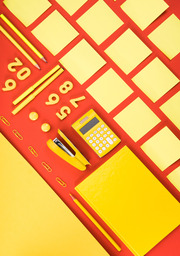Converting Fractions to Decimals: Easy Methods
Converting fractions to decimals in maths need not be a complicated task. It simply takes practice using basic steps to learn the process. The use mixed numbers which combine whole numbers is very practical for everyday situations and problem-solving, such as in cooking, home building projects, and in finances.
Fractions allow us to solve and indicate complicated problems including non-integer quantities in algebraic equations. Just as you can use a dictionary to switch between languages you can find online tools to convert fractions to decimals and check your work.
In this blog post, we will discuss the visions of mixed numbers, and introduce the benefits of operating a fraction calculator online along with the conversion of fractions into decimals by utilizing a lot of easy methods.
What is a Fraction?
A numeric that is not a whole number is referred to as a fraction. Fractions are used to recognize a quotient that differs in two portions including a numerator and a denominator. In any complex function, the denominator is always greater than the numerator and is indicated by the fraction.
Ways To Convert Fractional Terms Into Decimals:
If you want to do calculations by the division of numerator with denominator we can get the answers by converting fractions into decimals easily. With the given below methods, we can do addition, subtraction, multiplication, and division in a very short time. So, follow the below given methods.
Method 1: Simplifying The Fraction
In this method, there is a need to follow a couple of steps in which to calculate the greatest common factor of the numerator and denominator of the given terms. After this step divide the numerator and denominator by the GCD. This process helps you to simplify the process easier to simplify terms by changing them into decimals.
For example, let’s convert the fraction 15/20 to a decimal using this method.
- Find the GCD of 15 and 20. The GCD is 5.
- Divide both the numerator and denominator of the fraction by 5. This gives us 3/4.
- Convert 3/4 to a decimal by dividing 3 by 4. This gives us 0.75.
Method 2: Dividing The Numerator By Denominator
Same to other methods in this you need to divide the numerator of fractions by the denominator. This is able to be considered that the division will continue if the numerator of a given set is not divisible by the denominator until the quotient is a decimal.
For example, let’s convert the fraction 7/8 to a decimal using this method.
- Divide 7 by 8. This gives us 0.875.
Method 3: Recurring Decimals into Infinite:
This is the method for changing recurring decimals into fractional terms. This is based on the idea that is equivalent to a geometric series.
For example, let us consider 1/3 or 5/6. In this case, the results are given in the form of recurring fractions that repeat limitlessly.
- This looks like 0.333… or 0.833…
Steps To Use Handy Tool for Quick Solutions:
We will debate here how to manipulate a fraction calculator to compute problems of fractions within very little time because fractions are used to confirm the part of a group of objects or a whole. To obtain the terms of fractions there is a very simple process as follows:
- First of all, choose the values that you want to evaluate.
- Put the values in fraction form and set their symbols.
Final Results:
- Showcase of Fractions or Decimals: The tool will show the form in which the user will save either in decimal or fraction.
- Mixed Numbers: Certain problems are shown to us in a more intuitive representation and provided to us and the answers to the user are received in the mixed form.
- Reduced Fractions: Answers can be acquired in simplified form, clarity is guaranteed in the assignments and the chance of errors is reduced.
A Table of Common Fraction Conversions Into Decimals:
With the help of modern technology mixed numbers are attainable and apparent for individuals who can be students or professionals. Solve the problems of maths consisting of fractions is a complicated task but you can be made easy by looking at the below table:
| 64th | 32nd | 16th | 8th | 4th | 2nd | Decimal | Decimal (inch to mm) |
| 1/64 | 0.015625 | 0.396875 | |||||
| 2/64 | 1/32 | 0.03125 | 0.79375 | ||||
| 3/64 | 0.046875 | 1.190625 | |||||
| 4/64 | 2/32 | 1/16 | 0.0625 | 1.5875 | |||
| 5/64 | 0.078125 | 1.984375 | |||||
| 6/64 | 3/32 | 0.09375 | 2.38125 | ||||
| 7/64 | 0.109375 | 2.778125 | |||||
| 8/64 | 4/32 | 2/16 | 1/8 | 0.125 | 3.175 | ||
| 9/64 | 0.140625 | 3.571875 | |||||
| 10/64 | 5/32 | 0.15625 | 3.96875 | ||||
| 11/64 | 0.171875 | 4.365625 | |||||
| 12/64 | 6/32 | 3/16 | 0.1875 | 4.7625 | |||
| 13/64 | 0.203125 | 5.159375 | |||||
| 14/64 | 7/32 | 0.21875 | 5.55625 | ||||
| 15/64 | 0.234375 | 5.953125 | |||||
| 16/64 | 8/32 | 4/16 | 2/8 | 1/4 | 0.25 | 6.35 | |
| 17/64 | 0.265625 | 6.746875 | |||||
| 18/64 | 9/32 | 0.28125 | 7.14375 | ||||
| 19/64 | 0.296875 | 7.540625 | |||||
| 20/64 | 10/32 | 5/16 | 0.3125 | 7.9375 | |||
| 21/64 | 0.328125 | 8.334375 | |||||
| 22/64 | 11/32 | 0.34375 | 8.73125 | ||||
| 23/64 | 0.359375 | 9.128125 | |||||
| 24/64 | 12/32 | 6/16 | 3/8 | 0.375 | 9.525 | ||
| 25/64 | 0.390625 | 9.921875 | |||||
| 26/64 | 13/32 | 0.40625 | 10.31875 | ||||
| 27/64 | 0.421875 | 10.715625 | |||||
| 28/64 | 14/32 | 7/16 | 0.4375 | 11.1125 | |||
| 29/64 | 0.453125 | 11.509375 | |||||
| 30/64 | 15/32 | 0.46875 | 11.90625 | ||||
| 31/64 | 0.484375 | 12.303125 | |||||
| 32/64 | 16/32 | 8/16 | 4/8 | 2/4 | 1/2 | 0.5 | 12.7 |
| 33/64 | 0.515625 | 13.096875 | |||||
| 34/64 | 17/32 | 0.53125 | 13.49375 | ||||
| 35/64 | 0.546875 | 13.890625 | |||||
| 36/64 | 18/32 | 9/16 | 0.5625 | 14.2875 | |||
| 37/64 | 0.578125 | 14.684375 | |||||
| 38/64 | 19/32 | 0.59375 | 15.08125 | ||||
| 39/64 | 0.609375 | 15.478125 | |||||
| 40/64 | 20/32 | 10/16 | 5/8 | 0.625 | 15.875 | ||
| 41/64 | 0.640625 | 16.271875 | |||||
| 42/64 | 21/32 | 0.65625 | 16.66875 | ||||
| 43/64 | 0.671875 | 17.065625 | |||||
| 44/64 | 22/32 | 11/16 | 0.6875 | 17.4625 | |||
| 45/64 | 0.703125 | 17.859375 | |||||
| 46/64 | 23/32 | 0.71875 | 18.25625 | ||||
| 47/64 | 0.734375 | 18.653125 | |||||
| 48/64 | 24/32 | 12/16 | 6/8 | 3/4 | 0.75 | 19.05 | |
| 49/64 | 0.765625 | 19.446875 | |||||
| 50/64 | 25/32 | 0.78125 | 19.84375 | ||||
| 51/64 | 0.796875 | 20.240625 | |||||
| 52/64 | 26/32 | 13/16 | 0.8125 | 20.6375 | |||
| 53/64 | 0.828125 | 21.034375 | |||||
| 54/64 | 27/32 | 0.84375 | 21.43125 | ||||
| 55/64 | 0.859375 | 21.828125 | |||||
| 56/64 | 28/32 | 14/16 | 7/8 | 0.875 | 22.225 | ||
| 57/64 | 0.890625 | 22.621875 | |||||
| 58/64 | 29/32 | 0.90625 | 23.01875 | ||||
| 59/64 | 0.921875 | 23.415625 | |||||
| 60/64 | 30/32 | 15/16 | 0.9375 | 23.8125 | |||
| 61/64 | 0.953125 | 24.209375 | |||||
| 62/64 | 31/32 | 0.96875 | 24.60625 | ||||
| 63/64 | 0.984375 | 25.003125 | |||||
| 64/64 | 32/32 | 16/16 | 8/8 | 4/4 | 2/2 | 1 | 25.4 |
Conclusion:
To solve problems, algebraic equations are generally building blocks of maths. In the solutions and formation of algebraic equations, fractions play a crucial role in the realm of algebra. The conversion of fractions to decimals allows you to express parts of a given mathematical term in various ways into the whole number. Regardless of these methods, another solution to simplify your problems is to utilize the fraction calculator. This skill is essential for calculations and comparisons, making you a math maestro!




